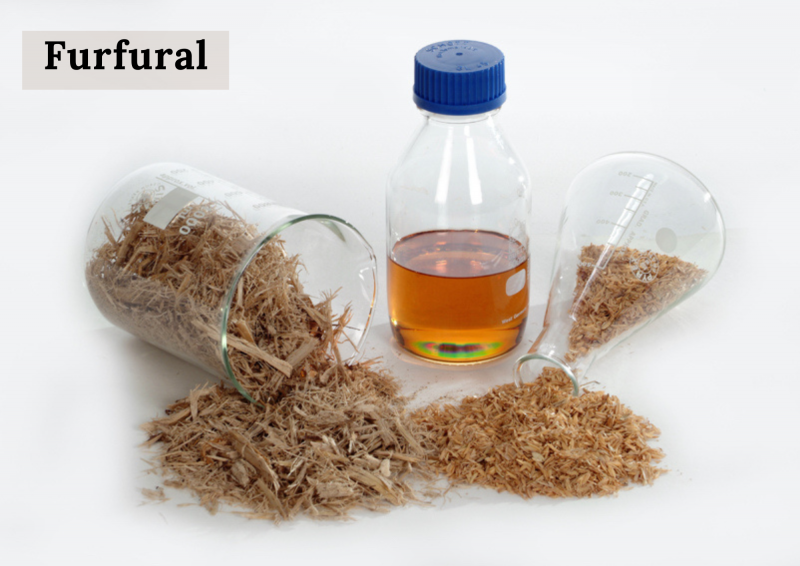Furfural, a fascinating aromatic aldehyde, has garnered significant attention in recent years due to its diverse applications across various industries. Derived from biomass, such as agricultural waste and crop residues, furfural represents a promising avenue towards sustainable and eco-friendly chemical production. In this article, we will delve into the properties, production methods, and the wide array of applications that make furfural a highly sought-after bio-based platform chemical.
Properties of Furfural
Chemically, furfural is a colorless, oily liquid with a unique almond-like aroma. Its molecular formula is C5H4O2, and it is classified as a heterocyclic aldehyde. The compound is highly soluble in water and various organic solvents, making it amenable to different processing techniques. Furfural's low boiling point and excellent solvent capabilities contribute to its versatility in various applications.
Production of Furfural
Furfural is primarily produced through the acid-catalyzed dehydration of pentose sugars, which are abundantly found in lignocellulosic biomass. Agricultural residues, such as corncobs, rice husks, and bagasse, serve as excellent feedstocks for furfural production. The process involves the extraction of pentose sugars from the biomass, followed by their dehydration in the presence of an acidic catalyst to yield furfural and other by-products.
Applications in the Chemical Industry
Solvent: Furfural's high solvent power makes it an ideal candidate for various industrial applications. It is used as a solvent in refining lubricating oils, extracting aromatics, and manufacturing adhesives and varnishes.
Pharmaceuticals: Furfural derivatives have shown promising biological activities, making them potential candidates for drug development. They exhibit antioxidant, anti-inflammatory, and anticancer properties, among others.
Resins and Polymers: Furfural-based resins and polymers have gained attention as sustainable alternatives to traditional petrochemical-derived materials. These bio-based materials find applications in coatings, adhesives, and composite materials.
Flavor and Fragrance: Furfural's distinctive almond-like aroma makes it a valuable component in flavor and fragrance formulations, particularly in the food and cosmetic industries.
Biofuels: Furfural can be converted into biofuels, such as furan-based biodiesel, which offers a renewable and environmentally friendly alternative to fossil fuels.
Plasticizers: Furfural derivatives are used as plasticizers in the production of plastics and rubber, enhancing their flexibility and durability.
Environmental Impact and Sustainability
One of the most significant advantages of furfural is its eco-friendly nature. As a product of biomass, it helps reduce the dependency on fossil fuels and decreases greenhouse gas emissions. Moreover, the utilization of agricultural residues for furfural production offers a valuable waste-to-resource strategy, contributing to the circular economy.
Conclusion
Furfural's versatility as a bio-based platform chemical holds immense potential for transforming various industries toward more sustainable and environmentally responsible practices. From solvents to pharmaceuticals and biofuels, the applications of furfural continue to expand, driving innovation and paving the way for a greener future. Embracing furfural and its derivatives can play a crucial role in building a more sustainable and resource-efficient world.
